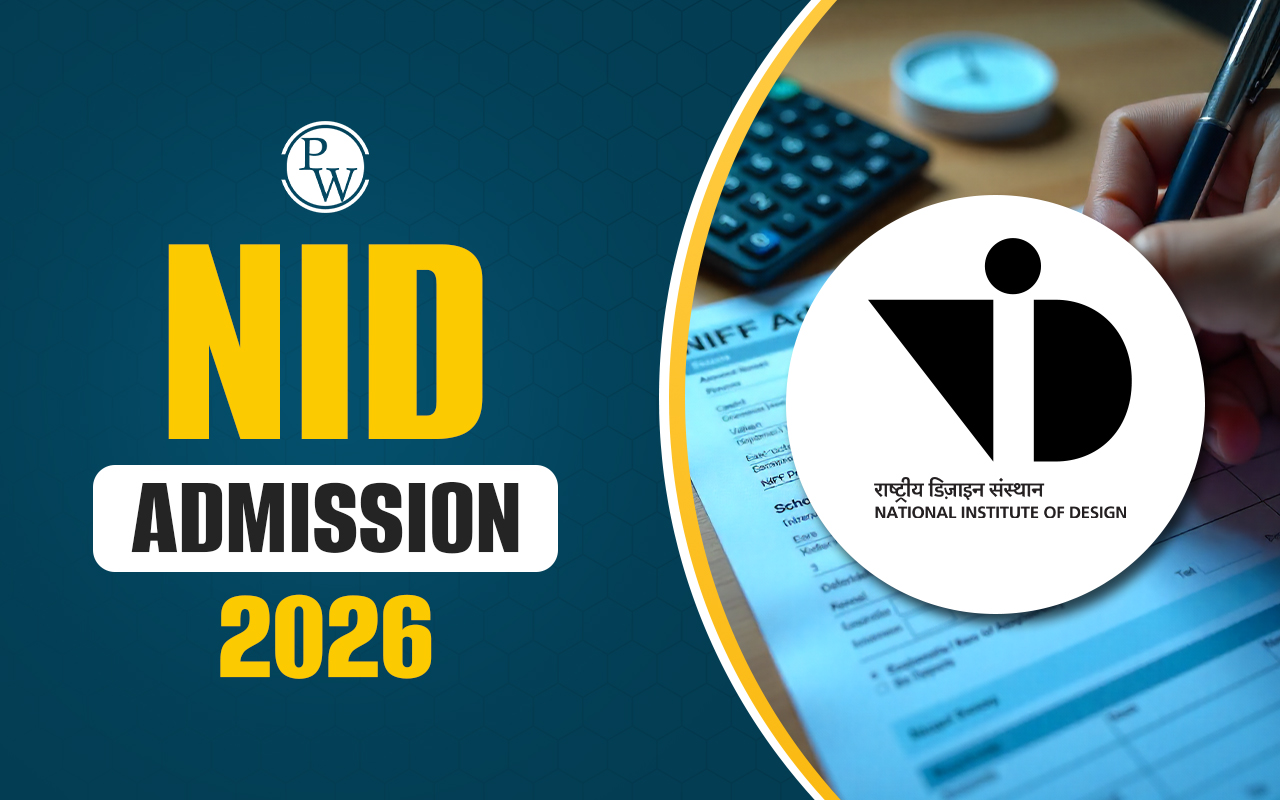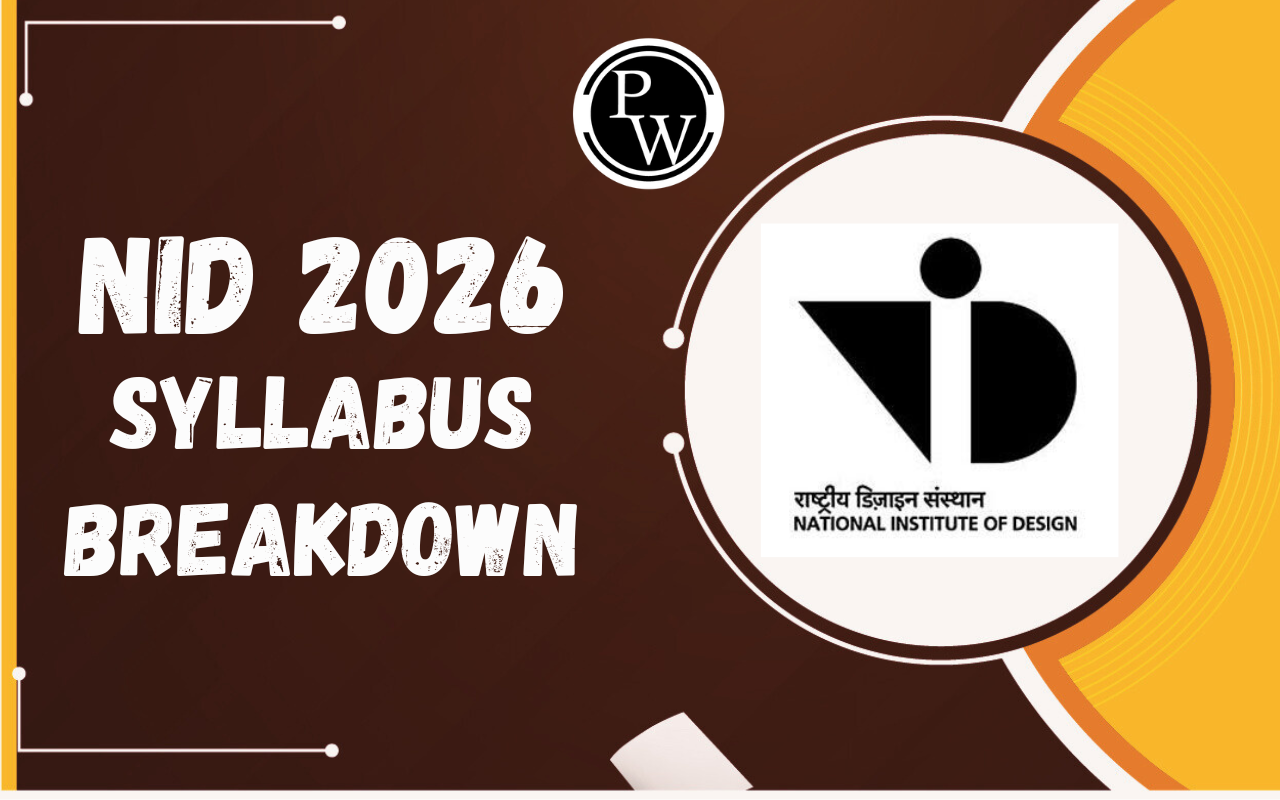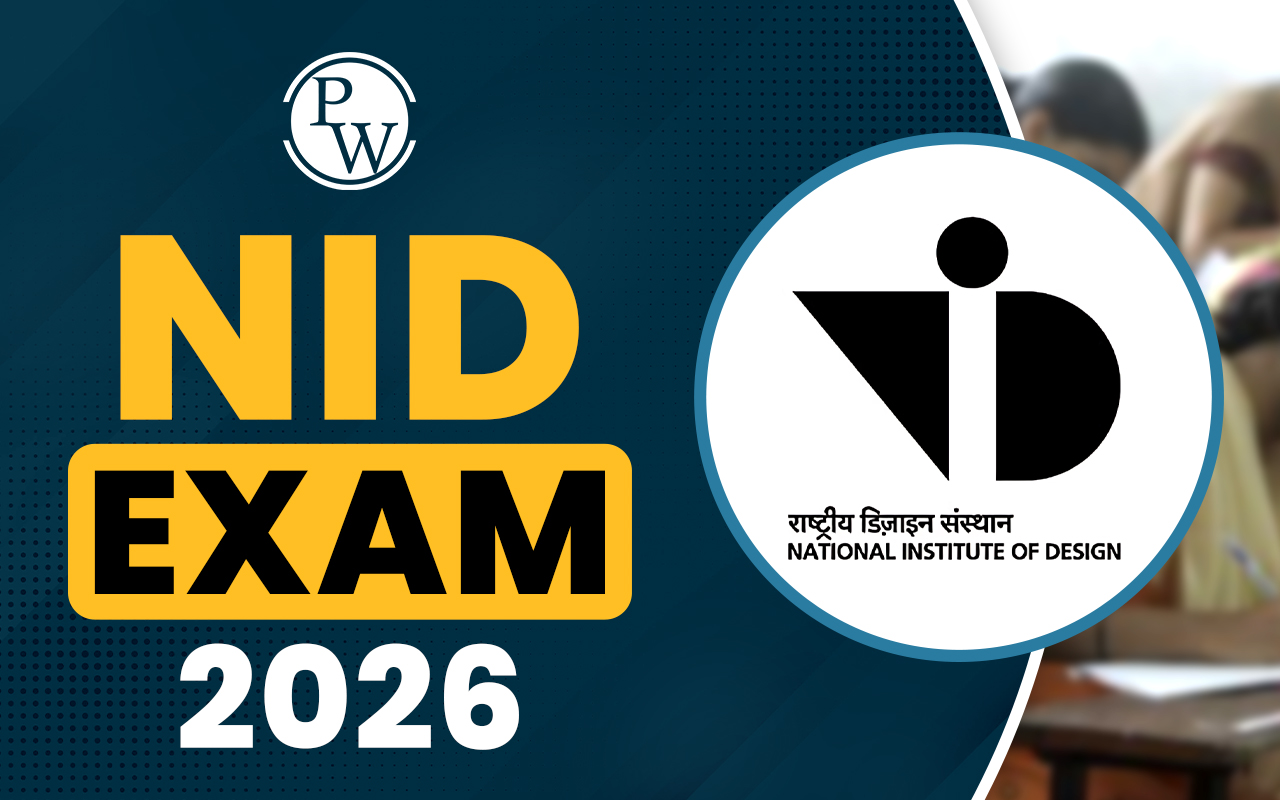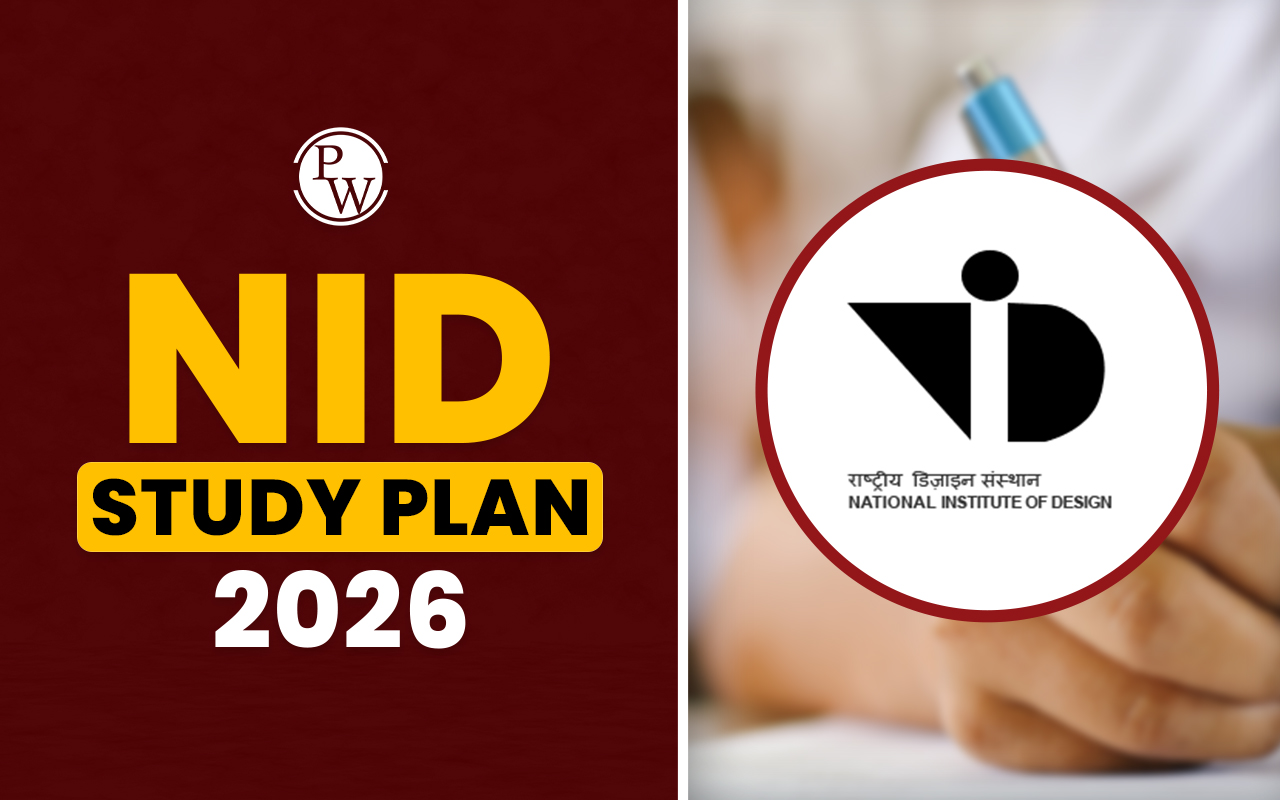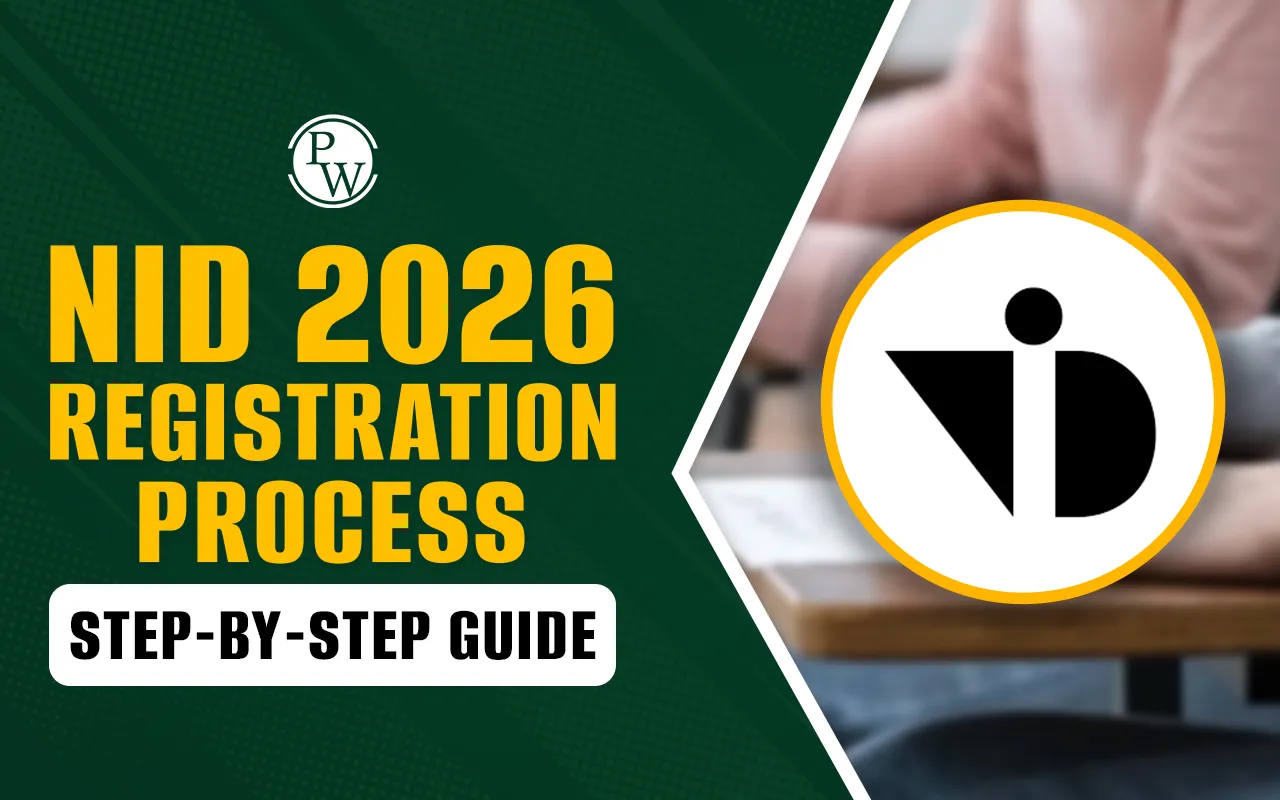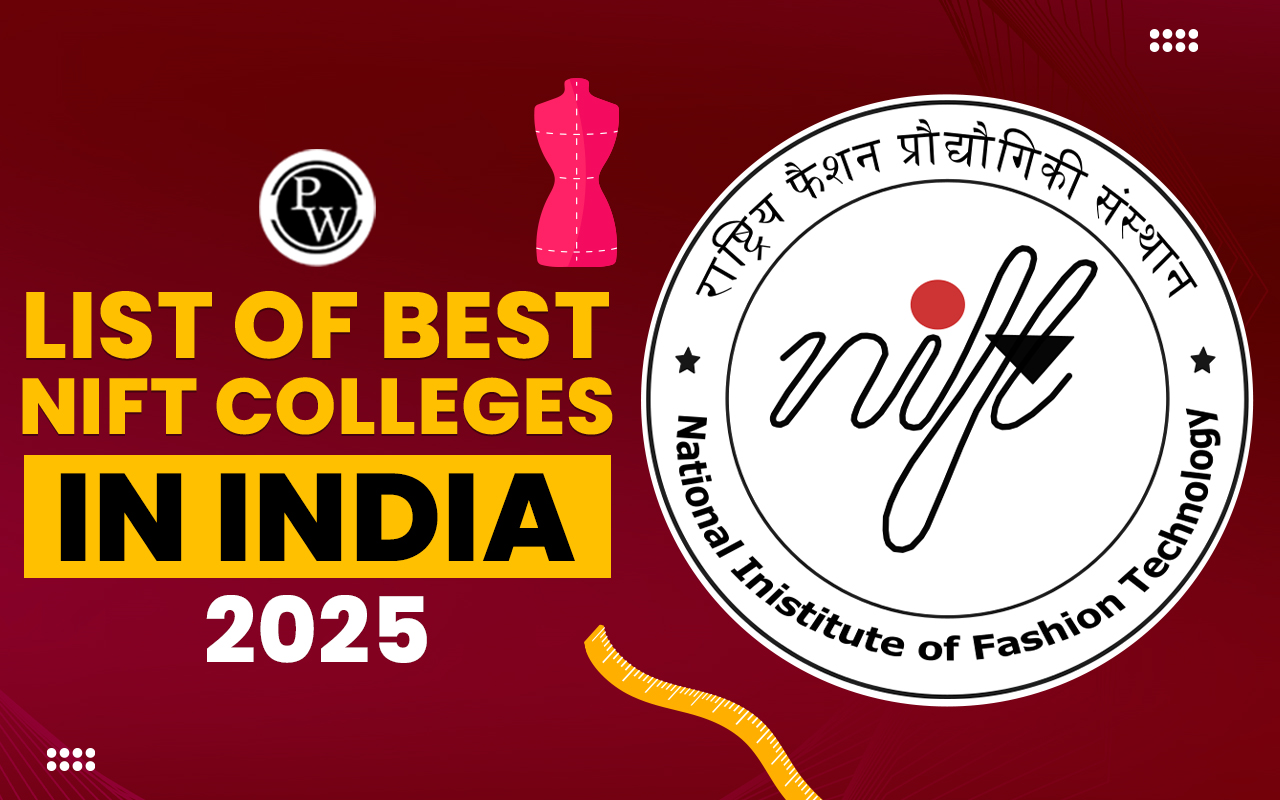
NIFT Exam Pattern 2025 was released by NTA on its official website along with the official notification. It is outlined in the NIFT 2025 Admission Prospectus. The exam is conducted in two stages, namely, General Ability Test (GAT) and Creative Ability Test (CAT). The CAT is a paper-based test designed to assess creativity, intuitive skills, observation, and innovative use of color. On the other hand, GAT is a computer-based test that evaluates communication ability, English comprehension, quantitative ability, analytical and logical reasoning, and general knowledge.
Candidates shortlisted from the written exams proceed to the Situation Test (for B.Des), which assesses material handling and problem-solving skills through hands-on tasks. To excel in the NIFT entrance exam 2025, candidates must be well acquainted with the exam pattern. Understanding the pattern helps you allocate time efficiently, prioritize high-priority topics, and practice the specific types of questions you’ll encounter in the exam.
NIFT Exam Pattern 2025 Overview
The NIFT 2025 entrance exam is a two-stage national-level test conducted by the National Institute of Fashion Technology for admission to undergraduate and postgraduate design programs. The exam consists of two primary components: the General Ability Test (GAT), which is mandatory for all courses, and the Creative Ability Test (CAT), which is specific to B.Des and M.Des programs. The exam will be held on February 9, 2025, with GAT conducted in computer-based test (CBT) mode and CAT in offline mode. Candidates will be evaluated on various skills including general knowledge, quantitative ability, communication skills, and creative thinking, with subsequent stages involving a Situation Test and Personal Interview for shortlisted candidates. To gain admission to the B.Des program, candidates have to clear all three stages of the selection process, namely CAT, GAT, and Situation Test. While for M.Des admissions candidates have to appear for CAT, GAT, and Group Discussion/PI. Candidates have to appear for GAT to gain admission to B.F.Tech and for M.F.Tech and MFM applicants, the selection process will be through GAT and GD/ PI.Read More - NIFT Chennai Courses
NIFT CAT Exam Pattern
- The CAT is a drawing-based test and will be conducted in pencil-and-paper-based mode. NIFT CAT is worth 100 marks.
- The time duration for the test is 3 hours.
- The test has no negative marking.
- The test aims to challenge the candidate's observation skills, intuitive skills, development skills, and innovative skills to develop and create something unique.
- The test also evaluates candidates based on the innovative use of colors and illustration skills
NIFT GAT Exam Pattern
- After clearing the CAT entrance test, candidates proceed with the General Ability Test (GAT).
- For every wrong answer, there will be a penalty of 25% of the total marks.
- The test evaluates candidates based on their knowledge of English, Current Affairs, Logical Reasoning, and Quantitative Ability.
- The Quantitative Ability includes questions based on percentage, ratio proportion, rate of interest, work and time, addition, multiplication, division, fractions, percentages, etc.
- The English Comprehension is based on vocabulary, grammar, error detection, etc.
- The Logical Reasoning questions evaluate the candidate's ability to identify the given problem and apply reasoning to solve its core issues.
- For the Current Affairs and GK section, significant current news related to sports, politics, world meetings, etc are asked in the exam.
NIFT Situation Test Exam Pattern
- NIFT Situation Test is the 2nd stage of the NIFT entrance exam.
- The NIFT Situation Test is based on the candidate's skills in handling materials and innovative ability.
- Candidates will be tested in areas such as "Space visualization", color and quantity of the material, creative use of the material, construction skill, overall presentation, and finesse of the modal.
- Candidates have to write a short note on the concept or idea behind the model constructed. It should be only in the English Language.
- Candidates must be proficient in English since the mode of teaching is English in NIFT.
- Candidates seeking admission to Master's courses aren't required to take the Situation Test; instead, they have to appear in a Personal Interview.
NIFT Group Discussion Exam Pattern
- In the GD candidates are evaluated based on their eloquent skills.
- It is a 15-20 minute discussion around a case study assigned. The panel will assess your performance based on your leadership skills, knowledge of the topic, interpersonal skills, problem-solving approach, and other factors.
NIFT Exam Pattern 2025 For UG & PG Programs
The NIFT exam is held in offline mode at the allotted exam centers. The details regarding the examination centers will be provided on the admit card. As per the official notification, the exam pattern for the B.Des and B.F.Tech programs has been revised. However, no changes were made to the PG courses.The exam patterns for the different courses are discussed below.Read More - NIFT Bangalore Courses
NIFT Exam Pattern 2025 B.Des
The NIFT B.Des exam pattern has been revised. It consists of 100 multiple-choice questions based on Quantitative Ability, Communication Ability, English Comprehension, Analytical Ability, and General Knowledge and Current Affairs. The exam is conducted offline. For each correct answer, the candidates are awarded 1 mark and a penalty of 0.25 marks for every wrong answer.| Particulars | Details |
| Paper | GAT |
| Mode of Exam | Computer-Based exam |
| Test Duration | 120 minutes |
| Language | English/Hindi |
| Quantitative Ability | 20 |
| Sections | Questions |
| Communication Ability and | 40 |
| English Comprehension | |
| Analytical Ability | 15 |
| General Knowledge and Current Affairs | 25 |
| Total | 100 |
NIFT Exam Pattern 2025 M.Des
The NIFT exam includes 5 sections. Communication Ability and English Comprehension hold the maximum weightage in the paper followed by Analytical Ability.| Particulars | Details |
| Paper | GAT |
| Mode of Exam | Computer-Based Exam |
| Language | English/Hindi |
| Test Duration | 120 minutes |
| Sections | Questions |
| Quantitative Ability | 20 |
| Communication Ability | 30 |
| English Comprehension | |
| Analytical Ability | 25 |
| General Knowledge and Current Affairs | 15 |
| Total | 120 |
NIFT Exam Pattern 2025 B.F.Tech
The NIFT B.F.Tech exam consists of 2 sections namely, i.e. section A and section B. A total of 180 minutes are allotted to complete the paper. English Comprehension and General Knowledge sections are excluded from Section B. The questions are asked in both Hindi and English.| Particulars | B.F.Tech | |
| Paper Name | GAT - Section A (CBT) | GAT - Section B (CBT) |
| Language | English/Hindi | English/Hindi |
| Test Duration |
180 minutes |
|
| Sections | Number of questions | Number of questions |
| Communication Ability and English Comprehension | 40 | NIL |
| Quantitative Ability | 20 | 15 |
| Analytical & Logical Ability | 15 | 15 |
| General Knowledge and Current Affairs | 25 | NIL |
| Case Study | NIL | 20 |
| Total | 100 | 50 |
NIFT Exam Pattern 2025 M.F.Tech
There are a total of 150 questions in the NIFT M.F.Tech exam. Candidates can select either Hindi or English mode of examination. English Comprehension holds the maximum weightage followed by Quantitative Ability.| Particulars | Details |
| Paper | GAT |
| Mode of Exam | Computer-Based Exam |
| Language | English/Hindi |
| Test Duration | 120 minutes |
| Sections | Questions |
| Communication Ability & English Comprehension | 45 |
| Case Study | 25 |
| Quantitative Ability | 30 |
| Analytical & Logical Ability | 25 |
| General Knowledge And Current Affairs | 25 |
| Total | 150 |
NIFT Exam Pattern 2025 MFM
The NIFT MFM consists of 150 questions. Candidates are given 180 minutes to complete the exam.| Particulars | Details |
| Paper | GAT |
| Mode of Exam | Computer-Based Exam |
| Language | English/Hindi |
| Test Duration | 120 minutes |
| Sections | Questions |
| Communication Ability & English Comprehension | 50 |
| Case Study | 40 |
| Quantitative Ability | 10 |
| Analytical & Logical Ability | 25 |
| General Knowledge And Current Affairs | 25 |
| Total | 150 |
Read More - NIFT Application Form 2025
NIFT Exam Pattern 2025 Exam Weightage for UG & PG Courses
The final merit list is prepared based on the marks obtained in both CAT and GAT exams. The weightage of both CAT and GAT exams is given in the following table.| Program | Exam Weightage |
| NIFT Bachelor of Design (B.Des) |
|
| NIFT Bachelor of Fashion Technology (BFTech) |
|
| NIFT Master of Design (MDes) |
|
| NIFT Master of Fashion Management (MFM) |
|
| NIFT Master of Fashion Technology (MFTech) |
|
NIFT Syllabus 2025
The NIFT Syllabus 2025 covers two main written exams: the General Ability Test (GAT) and the Creative Ability Test (CAT), along with a hands-on Situation Test for B.Des and case study-based GD/PI for PG courses. The GAT assesses quantitative ability, analytical and logical reasoning, communication skills, English comprehension, and general knowledge, including current affairs and fashion industry awareness. The CAT evaluates creativity, observation, innovation, and design skills through topics like design theory, color psychology, drawing fundamentals, and visual logic. For B.Des aspirants, the Situation Test further examines material handling and problem-solving abilities in a real-world context.
NIFT Exam Pattern 2025 Preparation Tips
Some preparation tips for the NIFT exam 2025 are as follows.- Familiarize yourself with the NIFT exam pattern, which typically includes multiple sections such as Creative Ability Test (CAT), General Ability Test (GAT), and Situation Test. Knowing the format helps you allocate time effectively during preparation.
- For the CAT section, practice sketching, ideation, and design problem-solving. Work on improving your creativity, visualization skills, and the ability to translate ideas into sketches.
- Practice solving mock tests and previous year papers within the allotted time to improve your speed and accuracy.
- For the Situation Test, be prepared to demonstrate your practical design abilities.
- The GAT section tests general knowledge, reasoning, and English proficiency. Stay updated on current events and read newspapers to improve your overall knowledge.
NIFT Exam Pattern 2025 FAQs
What is the NIFT B.Des entrance exam pattern?
How many seat allotments are in NIFT 2024?
What happens in NIFT Counseling?
Is there a negative marking in NIFT GAT?
What is the duration of the NIFT 2025 exam?

